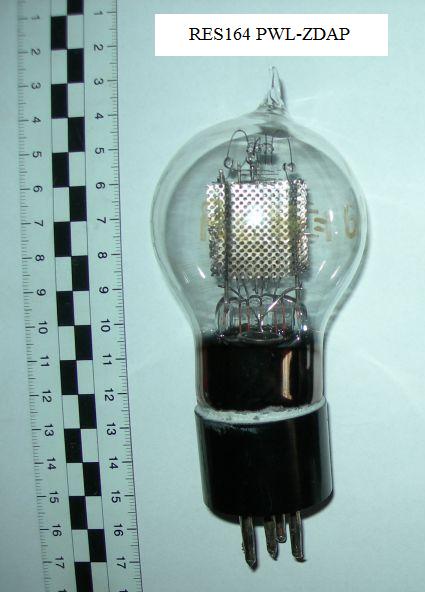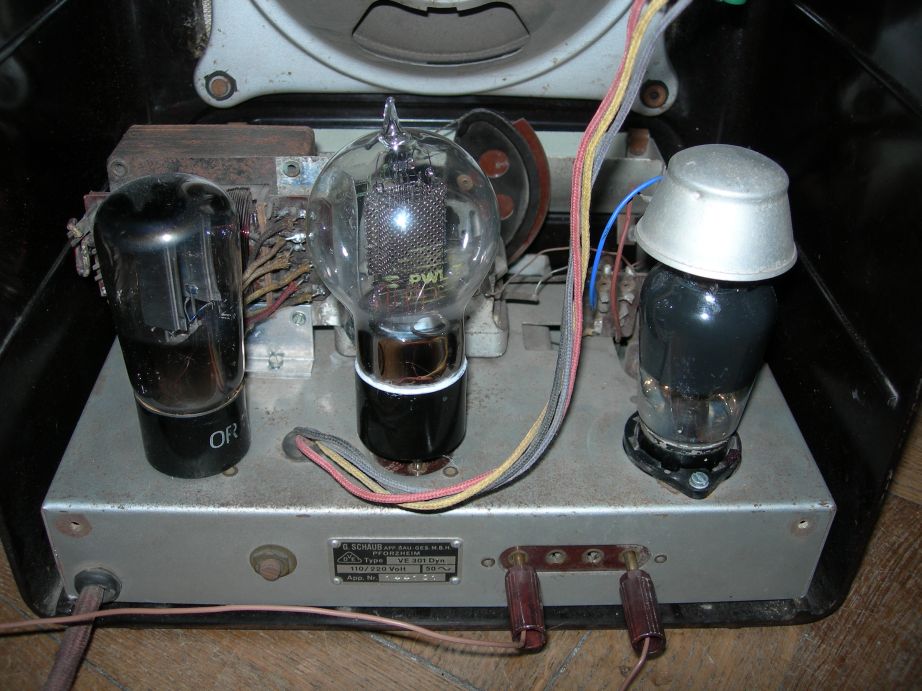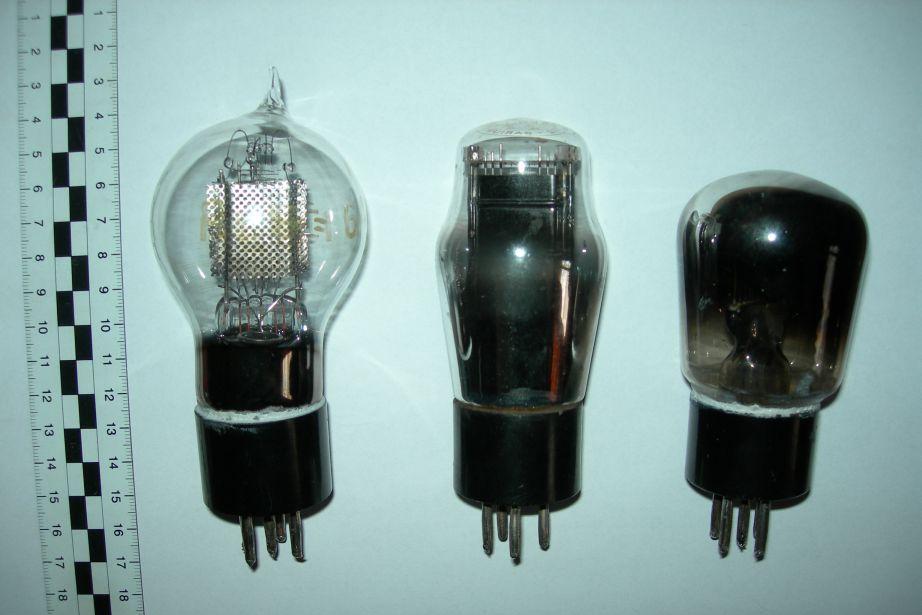

Vacuum tube type RES164 worked in radio receivers type VE301 as power amplifier.
The parameters of tube:
Because of cathode in this tube was barium cathode, lifetime was rather short. It's a problem for users, because RES164 is expensive and
could be exhausted, even filament is good.
Sometimes users try to substitute this tube by russian tube type 4P1Ł, 3S4T or another types.
I thought that it would be better to prepare equivalent RES164. Starting working I posited that:
The first equivalent tube is shown downstair:
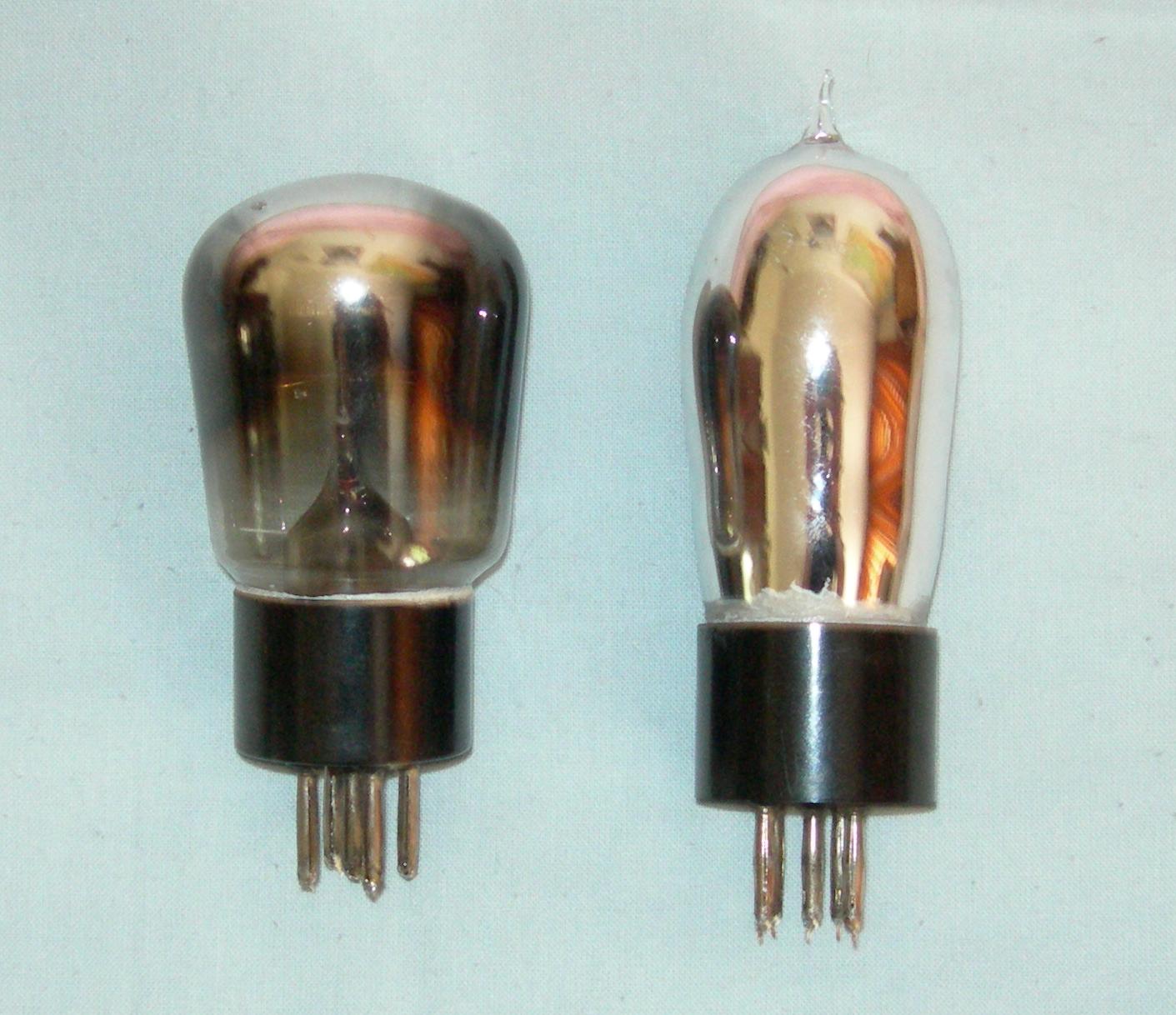
Internal construction is shown farther.
The oxide cathode is prepared as 3 inverted letters "V". It's very important because of dimensions and filament voltage.
In the anode is part of magnesium. After sputtering it's decoration on the glass.
Tube was pumped by glass pipe on the peak of glass bulb.
After pumping and sputtering barium getter in the tube and activating cathode tube was tested inside receiver VE301.
This test was ok, although sensitivity was some less than orignal, good RES164.
Then tested the transconductance. It was ca. (około 1,1mA/V) because of the first grid construction.
Emission current was good.
After tube was damaged for test, if sputtered magnesium could be a cause of worst electrical insulation.
However electical resistance between grids and anode and between the first grid and the second grid was very high, inside observed manesium on the glass wafer
and on the glass insulators.
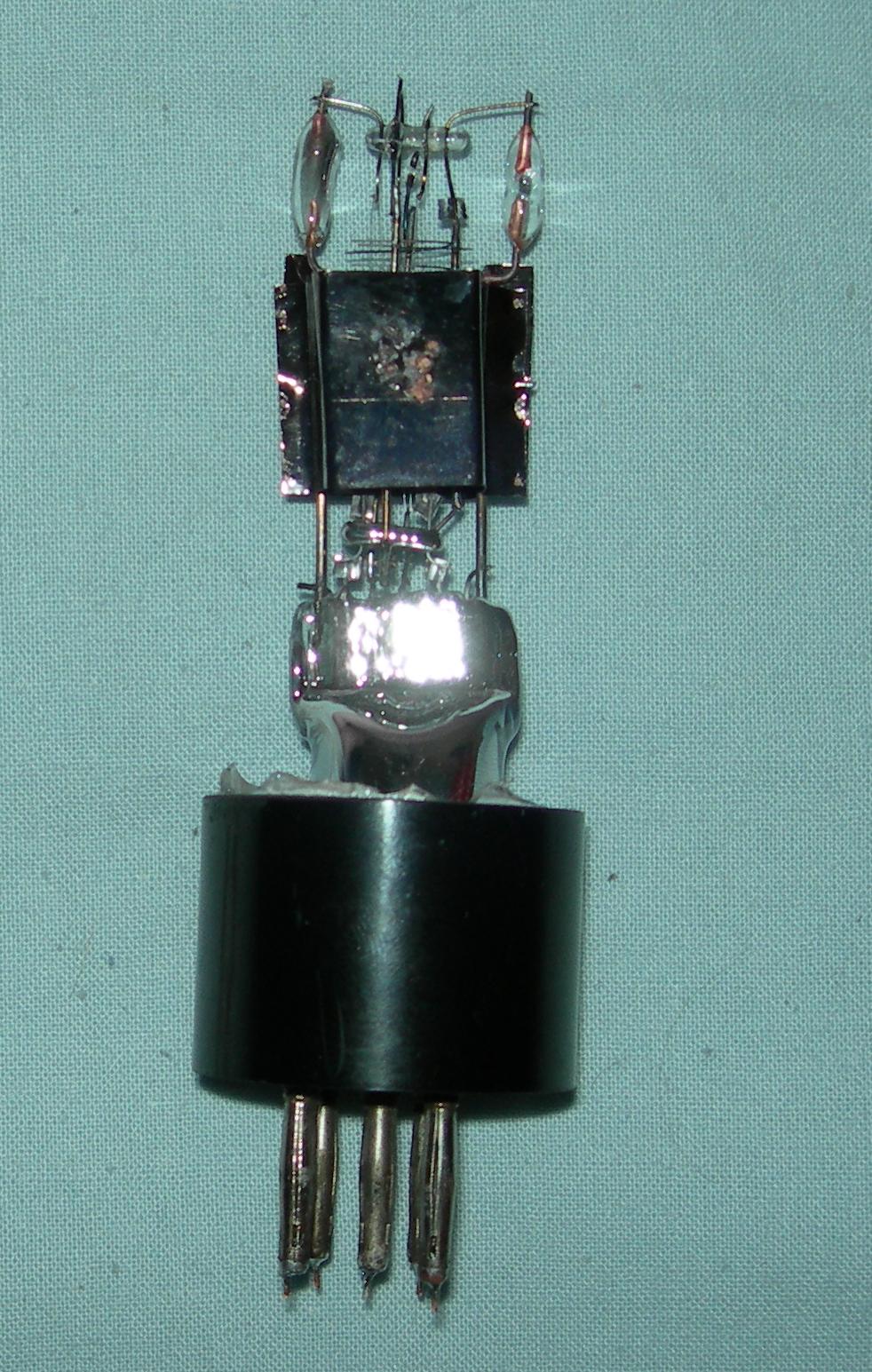
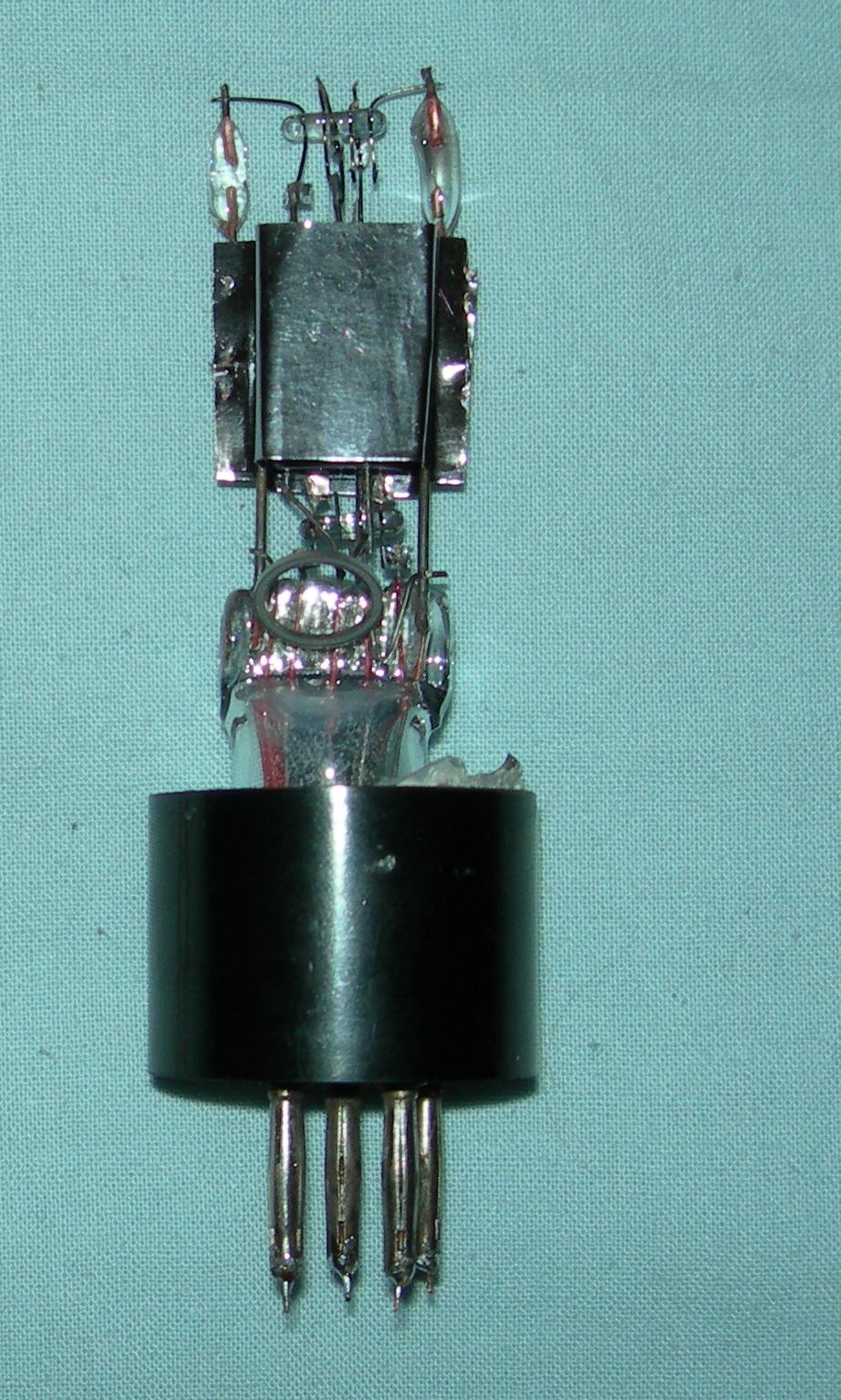
The next construction of tube was better. I changed glass bulb, construction of cathode, construction of the first grid and anode, I used another getter(only barium getter).
This tube is good equivalent of tube RES164.
